Extract from The Guardian

Missed opportunities, gaps in correspondence and a failure to plan ahead. If this was a vaccine race, did Australia fall at the first hurdle?
Last modified on Sun 12 Sep 2021 06.01 AEST
On 30 June 2020, Victoria’s Covid cases were doubling. Within a week the state would be in its second lockdown.
That same day Pfizer wrote to the federal health minister, Greg Hunt, with a clear sense of urgency, wanting to discuss a vaccination deal.
Act fast, they hinted – other nations are signing deals.
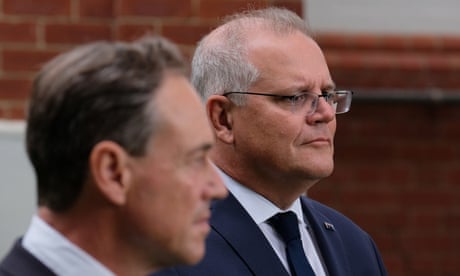
Almost four months and hundreds of deaths later, Victoria’s lockdown ended. Two more weeks after that, Australia finally signed the Pfizer contract.
Several stumbles have hampered Australia’s vaccination efforts. A local effort from the University of Queensland had to be dumped after false positive HIV results were found. Rare AstraZeneca side effects saw its use – and its popularity – curtailed. Moderna and Novavax are still on their way.
Pfizer has become the vaccine of choice, and there hasn’t been enough.
The UK signed up for 30m doses on 20 July. On 8 December, Margaret Keenan got the world’s first Pfizer mass vaccination jab. “It’s the best early birthday present I could wish for,” the soon to be 91-year-old said.
Two days later the US locked down 100m doses. On 15 December, the first recipient – Long Island critical care nurse Sandra Lindsay – said on a livestream that she trusted the science.
Other countries snapped up jabs thick and fast, with Australia a clear outlier by November.
On 21 February, prime minister Scott Morrison sat next to World War II survivor Jane Malysiak as she received Australia’s first Pfizer vaccine. “I didn’t expect such a lot of people, I just thought they’d do the jab and take two pictures,” she said, while Morrison declared it a “historic day” for Australia.

Prime minister Scott Morrison with World War II survivor Jane Malysiak when she received Australia’s first Covid vaccine on 21 February 2021. Photograph: Mark Evans/Getty Images
The lag is obvious to anyone, both in the procurement and the delivery.
What happened in those missing months between that first meeting and that first deal. If this was a race, did Australia fall at the first hurdle?
A failure of public policy
Documents released under freedom of information legislation have started to unravel what a number of people have labelled the greatest public policy failure in Australian history.
The documents show the first discussion between Australia and Pfizer was on 26 June, and it was followed up by that 30 June email to the health department and an attached letter to health minister Greg Hunt.
The tone was clear. “I am requesting this meeting at the earliest opportunity,” the Pfizer representative wrote. The landscape is “moving swiftly”, they said, adding that they were talking to other nations. Pfizer was moving urgently, so the vaccines could be “deployed at unprecedented speed”.
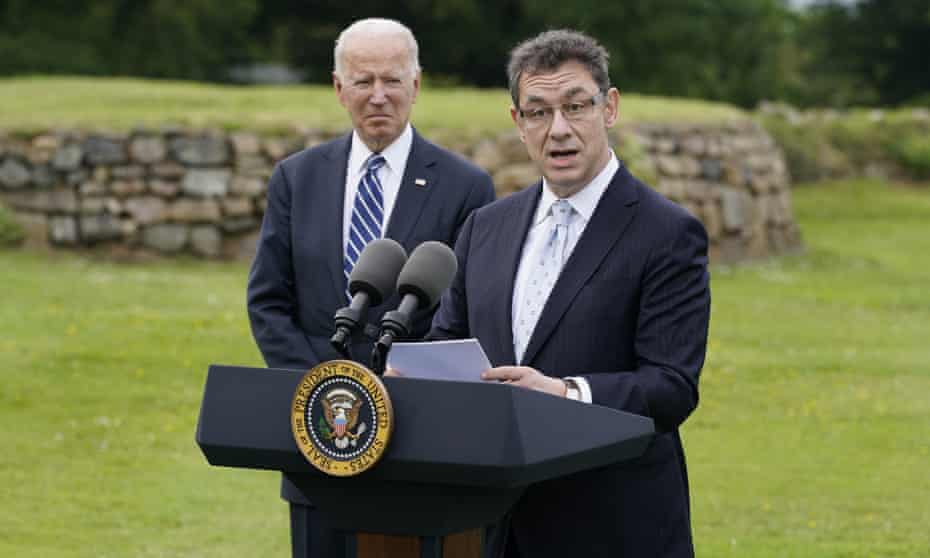
Pfizer CEO Albert Bourla and US president Joe Biden. Photograph: Patrick Semansky/AP
Despite the letter being addressed to Hunt, departmental first assistant secretary Lisa Schofield was dispatched. (A year later, both Morrison and Hunt came under fire for not meeting directly with Pfizer leadership – after former prime minister Kevin Rudd revealed that he himself had. Morrison deferred questions about the lack of meetings to Hunt, and when he was pursued over whether Hunt was right to demur, said: “I’ll let others make those judgments.”)
Globally Pfizer could have millions ready by the end of 2020, and hundreds of millions this year, the representative said in the released emails. Let’s meet, they said.
Pfizer pushed, but Australia dithered. Why?
Prime minister Scott Morrison said Pfizer was prioritising places where “people were dying in their thousands, tens of thousands”. “That’s where the focus of those companies was.”
But Bourla said that wasn’t how decisions were made. He told Fortune they had a system where high-income countries were charged “the cost of a meal”, middle-income countries half that and low-income countries could buy at cost. He said in May or June 2020 they started negotiations with countries and eventually he was worried that poorer countries weren’t signing up.
He had enough stock that he started calling people.
“We were actually bothering them, ‘come sign the contract, come sign the contract’,” he said.
Morrison also said the government wanted to have a “home-manufactured vaccine”, with CSL making AstraZeneca in Melbourne, so as not to rely on overseas supplies.

Prime minister Scott Morrison visits the CSL vaccine manufacturing facility on 12 February 2021 in Melbourne. Photograph: Getty Images
Guardian Australia revealed that in August last year, while negotiations were languishing, the government’s vaccine advisory group urged the health department to get as many vaccines as possible from different sources.
Grattan Institute economist Stephen Duckett said Australia could have been “fully vaccinated by February”. Bill Bowtell, adjunct professor at UNSW and a strategic health policy consultant, tweeted that it was “no secret” Pfizer offered deals to countries to secure priority access. “Securing supply required swift action and top-level connection to seal the deal. Not done. This failure delayed vaccine rollout by six months,” he wrote.
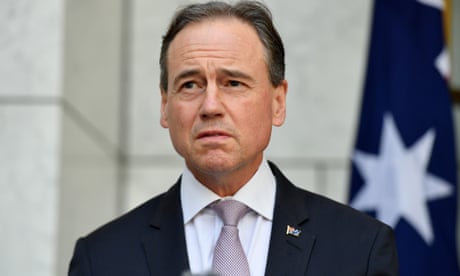
Morrison derided “heroes of hindsight”, as he called them.
Duckett says it was not a matter of hindsight, but lack of foresight.
“What most countries did was hedge their bets across a range of options.
“Australia made a strategic decision not to hedge its bets.”
You can’t blame the government, he says, for what went wrong with the other vaccines. But you can blame them for ending up with only one option, and for lagging on that option.
Morrison said the government made “every effort” to get more than 10m, but declined to say what those efforts comprised. When asked what efforts the government had made to get more, he said: “Every effort that we could.”
“In what way?”
“No, I’ve answered the question,” he said.
No sense of urgency
The question remains when every effort was made. The FOI documents obtained by Labor show that on 23 July, about a month after the initial contact, Pfizer wrote to Schofield pointing out that the UK and the US had already made agreements.
The email seems hopeful that a legal barney over a confidentiality agreement could be resolved. Before Pfizer could proceed with negotiations, they needed assurance that the information would not be shared. They needed a signed confidentiality disclosure agreement. An earlier email from Schofield had indicated that the government was “considering” the CDA, but was hesitant. “It is not usual practice for the commonwealth to sign such documents,” she wrote.
The Pfizer representative indicates that lawyers are close to sorting it out, and asks for another meeting. That’s it for the correspondence released.
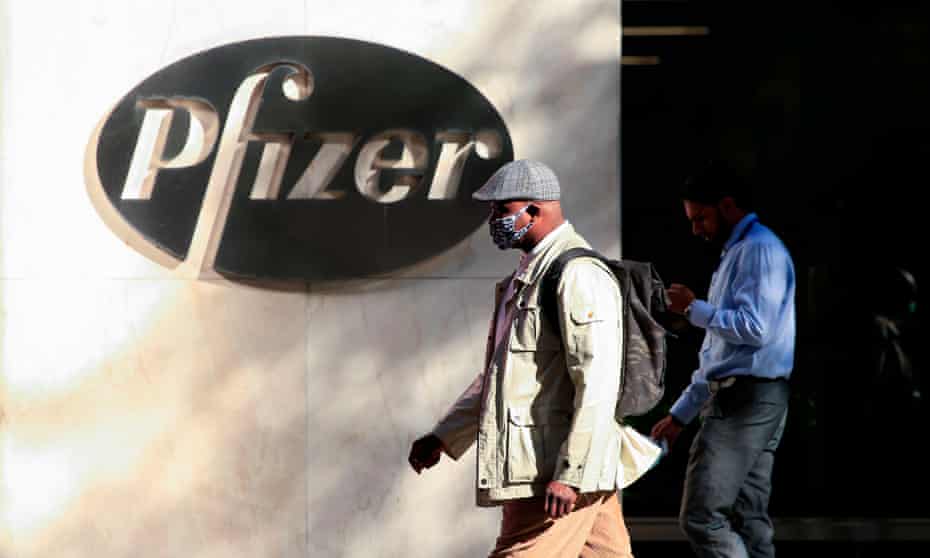
Pfizer world headquarters in New York. Photograph: Kena Betancur/AFP/Getty Images
“If we got in earlier how many more doses could we have got?” he said. “You don’t have to be a Rhodes scholar to conclude that if we’d been in early we could have got more.”
Pfizer said it needed approval from the Therapeutic Goods Administration before it could deliver the vaccine. It got that on 24 January, and delivered the first doses on 15 February. On the TGA approval timeline, Morrison and Hunt both say other countries used emergency approval processes to speed up the rollout process, but Australia was taking a more “cautious” approach.
Pfizer said in a statement it proposed the initial batch of 10m doses, and pointed out the later agreements for another 30m doses.
“The supply of vaccine in Australia was developed following consultation with the Australian government and each agreement was based on the availability of doses and earliest schedule that could be provided at that time,” the statement said.
Again, it’s unclear when it proposed the 10m doses, and whether it could have offered more if Australia had pushed sooner.
Asked about the missing months, Morrison said there were more meetings, and more emails. “Our political opponents have highlighted one set of correspondence, but there are many others,” he said.
Unfortunately, the government is keeping the correspondence that it says might vindicate it secret.
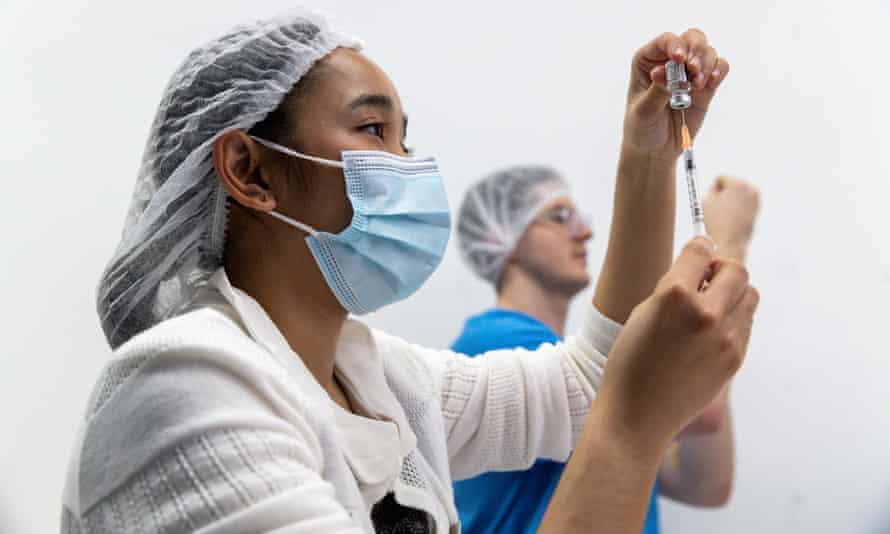
Health care workers fill syringes with the Pfizer vaccine at a mass vaccination clinic in Midland, Perth. Photograph: Richard Wainwright/EPA
He told the ABC’s 7.30 he understood Australia “took a pass” on ordering any vaccines at the initial meeting and that if you want to get the attention of a global CEO, having the prime minister call is the way to do it.
It was Norman Swan, the ABC’s coronavirus expert, who first broke the story about the troubles between the health department and Pfizer. He said that three separate sources told him an identical story about a rude departmental staff meeting with Pfizer and haggling over money and the intellectual property ownership.
Swan thinks there was arrogance within the department, and no sense of urgency.
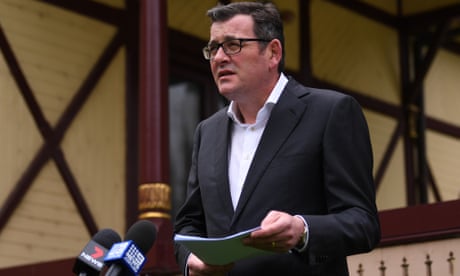
“We had the UQ vaccine, we had AstraZeneca, we didn’t need this avaricious company pushing drugs on us,” he told the Guardian.
He points out that about nine in 10 vaccines fail at the trial stage, so it was “extraordinary” that there were so many options, but that Australia’s four-vaccine strategy didn’t build in enough insurance.
“I was not a critic of the four-vaccine strategy. At the time I thought that was OK,” he said. “But they didn’t go for four vaccines. They went for three and a quarter vaccines.”
In the wake of the documents’ release, Morrison argues that Australia is catching up – that, for example, we are “only a couple of weeks” behind the US. He says his promise that the population would be fully vaccinated by October would be met because by mid-October enough vaccines will have arrived in the country.
Morrison has abandoned his claim that the vaccine rollout “is not a race”, but regularly compares Australia’s position on the track to others.
The problem with the race analogy is that while it’s instructive to see how other countries perform, this race is not actually about beating other countries to the finish line.
It’s about doing your personal best.
No comments:
Post a Comment